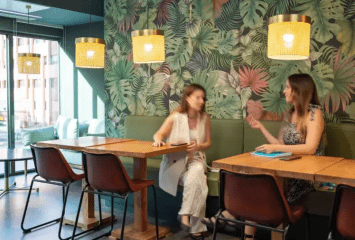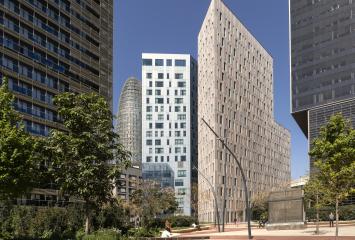Native fauna and flora: the office as an ally of nature
Biophilic design is one of the pillars of the so-called sustainable office: a design that considers people's innate connection with nature and introduces elements specifically intended to awaken it, such as furniture made from natural materials, solutions that favor abundant sunlight, and especially vegetation. These strategies result in greater inspiration for creative tasks, reduced stress levels, and ultimately, greater human well-being. However, to ensure that the benefits affect not only people but also the immediate environment, it is necessary to carefully select these elements.
Vegetation, yes, but regional
The sustainable office is not content with merely satisfying the need for a connection with nature for its occupants: it also seeks to generate a positive impact on the natural habitats that surround it. In this regard, and concerning the introduction of green spaces both inside and outside the building, not just any type of plant will do. On the contrary, the most ecological approach is to choose native vegetation, which maintains an evolutionary relationship with the local animals and insects, so that the presence of the former can lead to the strengthening of all this fauna. The current world demands such exercises in environmental awareness.
But it is not just a boost to local flora and fauna. Additionally, choosing native plants also promotes the reduction of resource consumption in the office, as these plants are already adapted to the regional climate and require less maintenance. This includes reduced water usage, sunlight needs, and pest resistance. This situation is very different from that of exotic plants. Moreover, and again relating back to people, the fact that native plants are so well adapted to the local climate makes them more efficient at purifying the indoor air of the office. With local flora, everyone benefits.
Strategies for a Bio-Native Office
We've already discussed the selection of native vegetation throughout this article, and it's a very simple strategy to implement. But it's by no means the only one when trying to support the surrounding nature. For example, in our office building in Sant Cugat Nord, we have installed a butterfly reserve in collaboration with the World Nature Foundation, where 25 different subspecies can feed on up to 41 native Mediterranean plant species. This is not an arbitrary choice. As explained by El País, the decline of these beautiful and important insects for our ecosystems is a very serious issue.
Additionally, by installing nest boxes and other nesting areas, offices have the opportunity to support the development of birds, one of the most prominent protagonists of urban fauna due to their mobility. Their presence, both physical and auditory due to their songs, provides office workers with a very pleasant feeling of familiarity and beauty that influences their daily performance. Thus, the conclusion is clear: what is truly positive for nature is also positive for people because, despite the apparent distance we take from it, we also belong to it.

